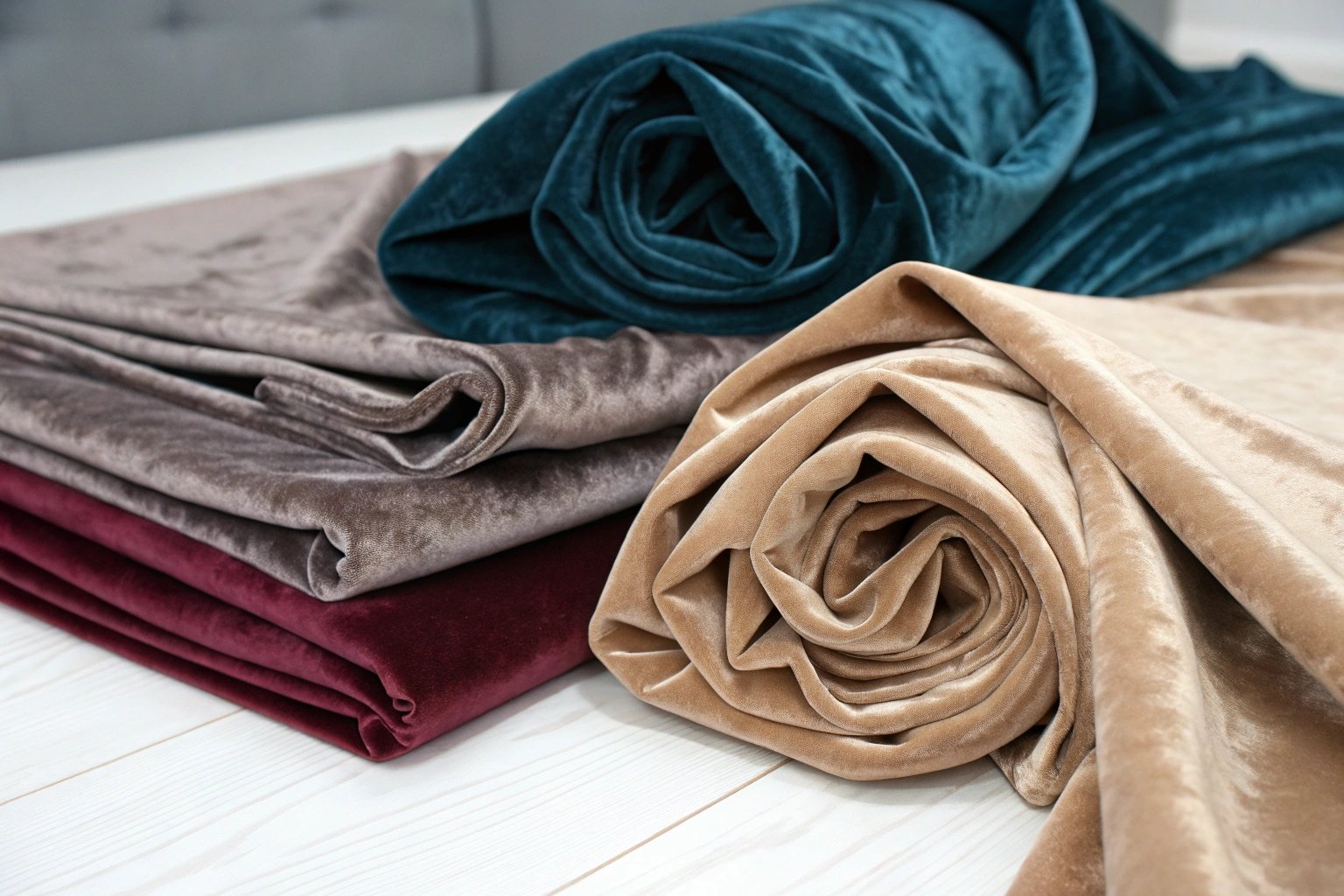In the world of inclusive fashion, adaptive clothing isn’t just a trend—it’s a necessity. Designed to support individuals with mobility, sensory, or health-related challenges, adaptive garments must combine softness, ease of wear, flexibility, and dignity. That’s why fabric choice is critical.
Stretch velvet is one of the top materials for adaptive clothing. It blends plush softness with flexible movement, sensory comfort, and aesthetic richness. Choosing the right stretch velvet fabric means balancing durability, elasticity, washability, and construction stability.
At Fumao Fabric, we’ve seen a surge in demand from buyers focused on adaptive and accessible clothing collections. Whether for seniors, individuals with disabilities, or post-surgery recovery wear, our velvet fabric options have helped brands deliver comfort and care through textile design.
What Makes Stretch Velvet Ideal for Adaptive Garments?
Stretch velvet isn’t just about softness. It offers multi-directional elasticity, thermal comfort, rich visual appeal, and skin-friendliness. For adaptive wear, these traits allow clothing to adjust to movement, reduce friction, and enhance self-dressing ability.
Its blend of spandex and polyester or rayon gives the needed structure and recovery. Velvet doesn’t just look luxurious—it performs under everyday demands.
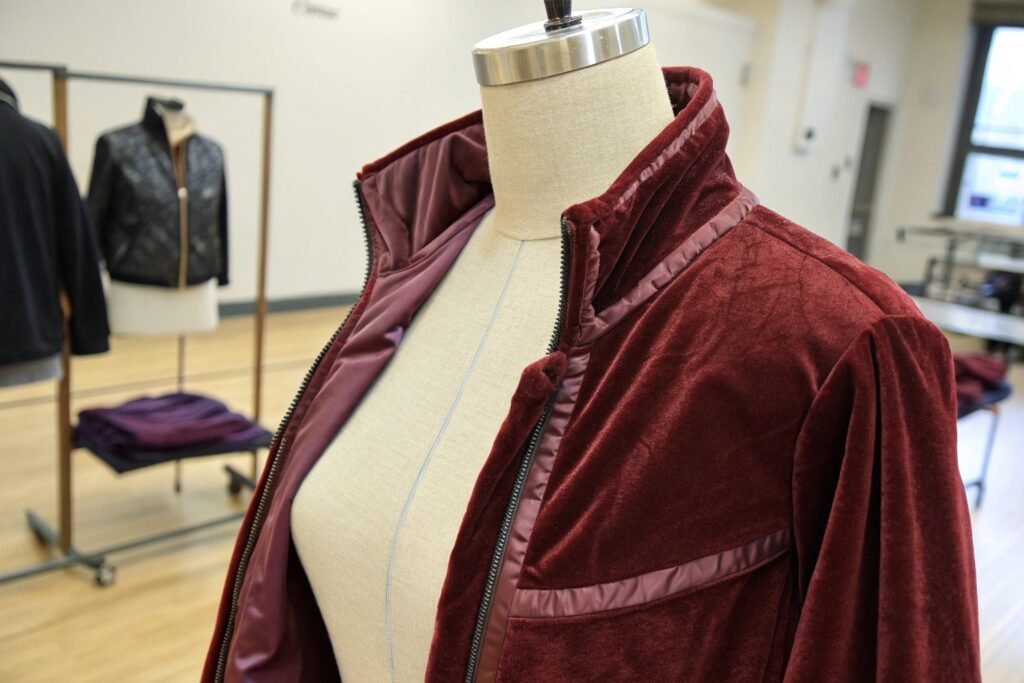
How Does Stretch Help With Dressing and Mobility?
Adaptive clothing often includes side zippers, magnetic closures, or extended openings. The stretch in velvet makes these easier to manage without tearing seams or creating stiffness. Four-way stretch velvet, in particular, flexes with joint movement, crucial for arthritis, muscular dystrophy, or ALS-friendly clothing.
Fabrics like Milliskin Stretch Velvet offer high elasticity for wrap tops and pull-on pants, while double-knit options provide additional weight and opacity.
Why Is Texture Important for Sensory-Sensitive Users?
Individuals with autism, neurological conditions, or sensory processing disorder (SPD) may react negatively to rough seams or scratchy surfaces. Velvet’s plush pile creates a calming touch surface. It helps reduce sensory overload while maintaining warmth and comfort.
Brands like Tommy Adaptive have introduced stretch velvet in sensory-friendly collections, showcasing its growing popularity.
Which Velvet Blends Offer the Best Recovery and Drape?
When it comes to stretch velvet, the fiber blend determines everything—from drape to recovery. Adaptive garments must maintain form after multiple stretches and washes.
Polyester-spandex velvet is best for high durability and colorfastness. Rayon-spandex offers a silkier drape, while modal blends provide eco-friendlier softness.
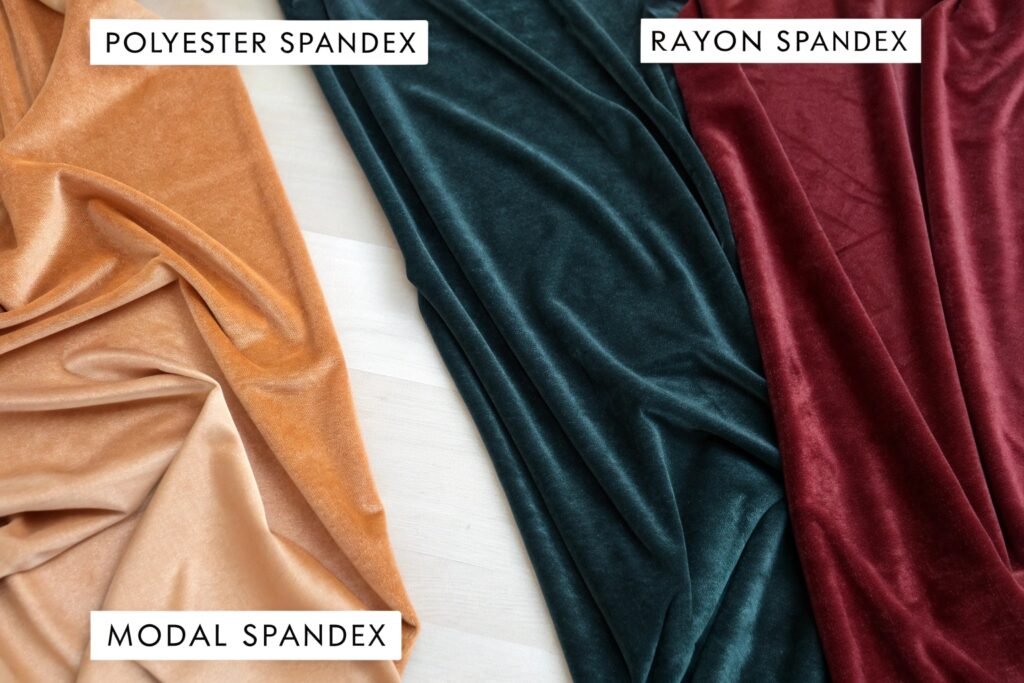
Is Polyester-Spandex the Most Practical for Daily Wear?
Yes. This blend resists wrinkles, dries quickly, and holds dye extremely well. It’s ideal for wheelchair-friendly trousers, performance tops, or hospital-friendly loungewear. Polyester velvet also tends to be more cost-effective, which matters in large-scale adaptive programs.
Suppliers like Pine Crest Fabrics offer FDA-tested stretch velvets suitable for commercial care apparel.
What About Modal and Rayon for Sustainable Adaptive Fashion?
Rayon adds softness but can shrink or stretch out without proper construction. Modal, derived from beech trees, offers better durability while being biodegradable. These blends work well for brands focused on sustainability and sensory ease.
You can pair modal-spandex velvet with GOTS-certified linings or recycled closures to enhance eco-responsibility without compromising comfort.
How Should Buyers Evaluate Velvet Weight and Stretch Ratio?
Stretch velvet isn’t one-size-fits-all. Some velvets feel plush but lack recovery. Others hold shape but sacrifice softness. For adaptive clothing, finding the sweet spot between plushness and function is key.
Look for a GSM between 220–300, a 4-way stretch ratio of at least 40%, and a soft, short pile that doesn't snag assistive devices.
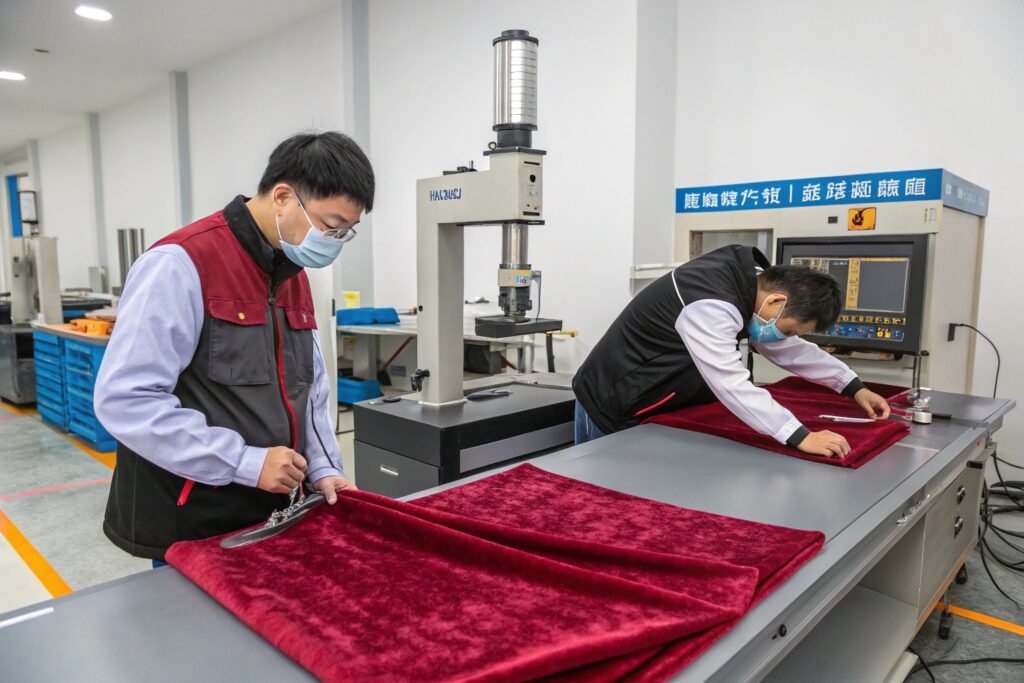
Why Is GSM Important in Adaptive Wear?
Heavier GSM means more warmth and opacity, suitable for outerwear or pants. Lighter GSM allows flexibility for tops, gowns, and layering pieces. But too heavy, and the fabric may restrict movement; too light, and it may lack durability.
A stretch velvet like Eurostretch Velvet balances GSM and breathability for both winter and transitional seasons.
How Can Buyers Test Stretch and Recovery?
You can measure fabric stretch by pulling it 5 inches wide and noting how far it extends before distorting. A good adaptive velvet should stretch to 7–8 inches and recover without curling or bagging. Some buyers use ASTM D2594 for industry-standard stretch testing.
At Fumao, we provide swatch test kits that simulate adaptive movement patterns, helping buyers validate recovery and comfort before bulk orders.
What Certifications or Features Should You Request from Suppliers?
Certifications are critical when sourcing for healthcare-adjacent or disability-support apparel. These ensure skin safety, low VOC emissions, and sustainable processing. Velvet, due to its pile structure, can trap residues if not processed properly.
Request OEKO-TEX 100, GRS (for recycled blends), or REACH compliance from your velvet suppliers.
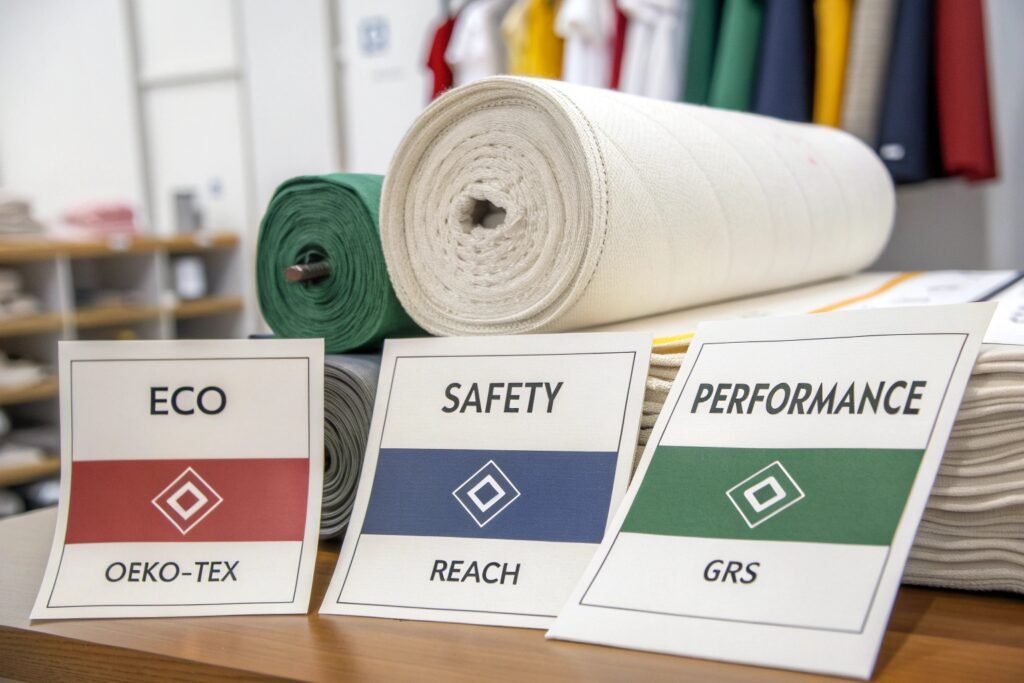
Are OEKO-TEX or REACH More Relevant for Adaptive Use?
Both are important. OEKO-TEX guarantees the fabric is free of harmful substances—essential for long-term contact with sensitive skin. REACH ensures the fabric does not include substances banned in the EU, particularly relevant for brands exporting adaptive garments to Europe.
You can verify certificates at OEKO-TEX’s portal or request a third-party inspection through TÜV Rheinland.
What Value-Added Features Enhance Velvet for Adaptive Clothing?
Some velvets now include antimicrobial finishes, moisture-wicking layers, or flame retardant coatings—ideal for healthcare or homecare use. Others are laminated for liquid resistance without sacrificing stretch.
For buyers in nursing care, post-surgical apparel, or senior fashion, these features increase garment function and safety. We offer several options at Fumao pre-treated with anti-pilling, UV-resistance, and formaldehyde-free finishes.
Conclusion
Stretch velvet offers a rare combination of luxury and function—perfectly suited for adaptive clothing. But not all velvet is created equal. By evaluating fiber blends, weight, certifications, and stretch characteristics, buyers can find the ideal match for comfort-forward, inclusive fashion. At Fumao Fabric, we specialize in velvet solutions tailored to healthwear, recoverywear, and accessible fashion collections—because fabric should adapt just like the clothing it becomes.

